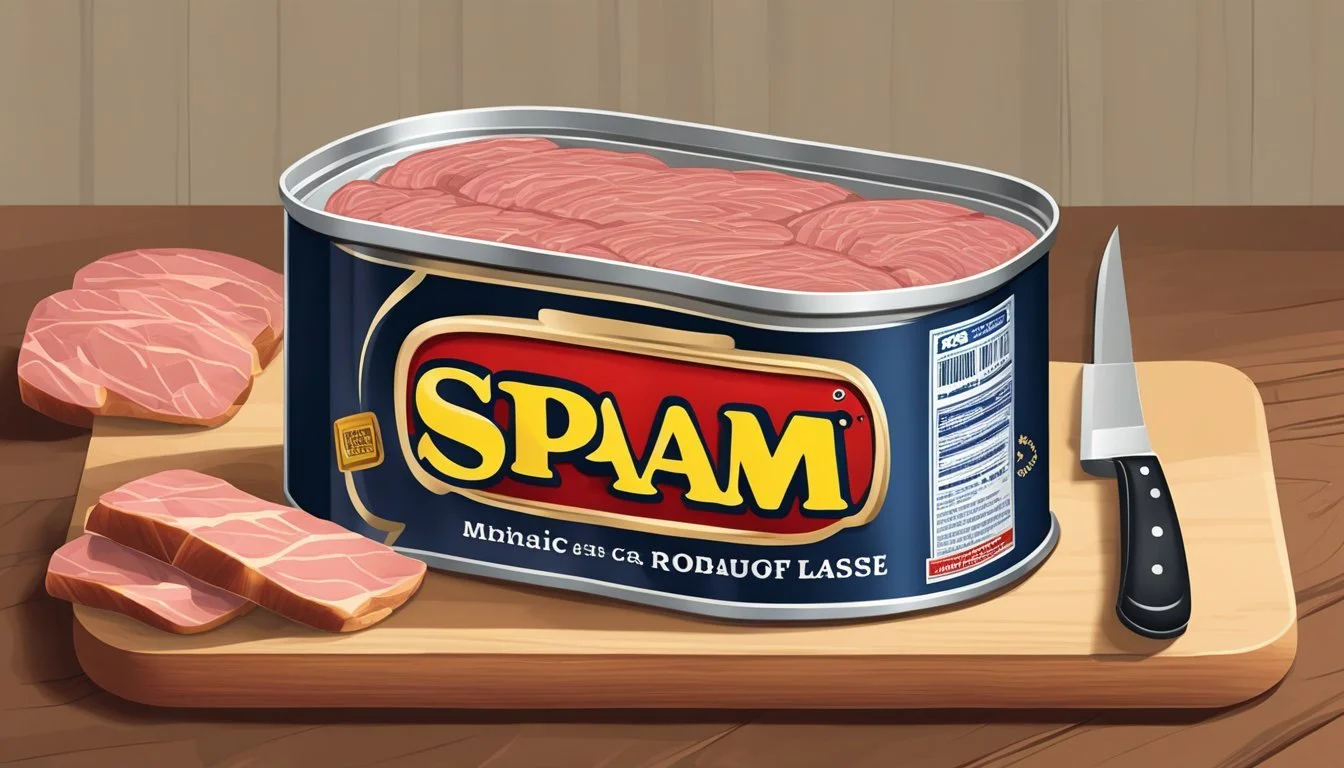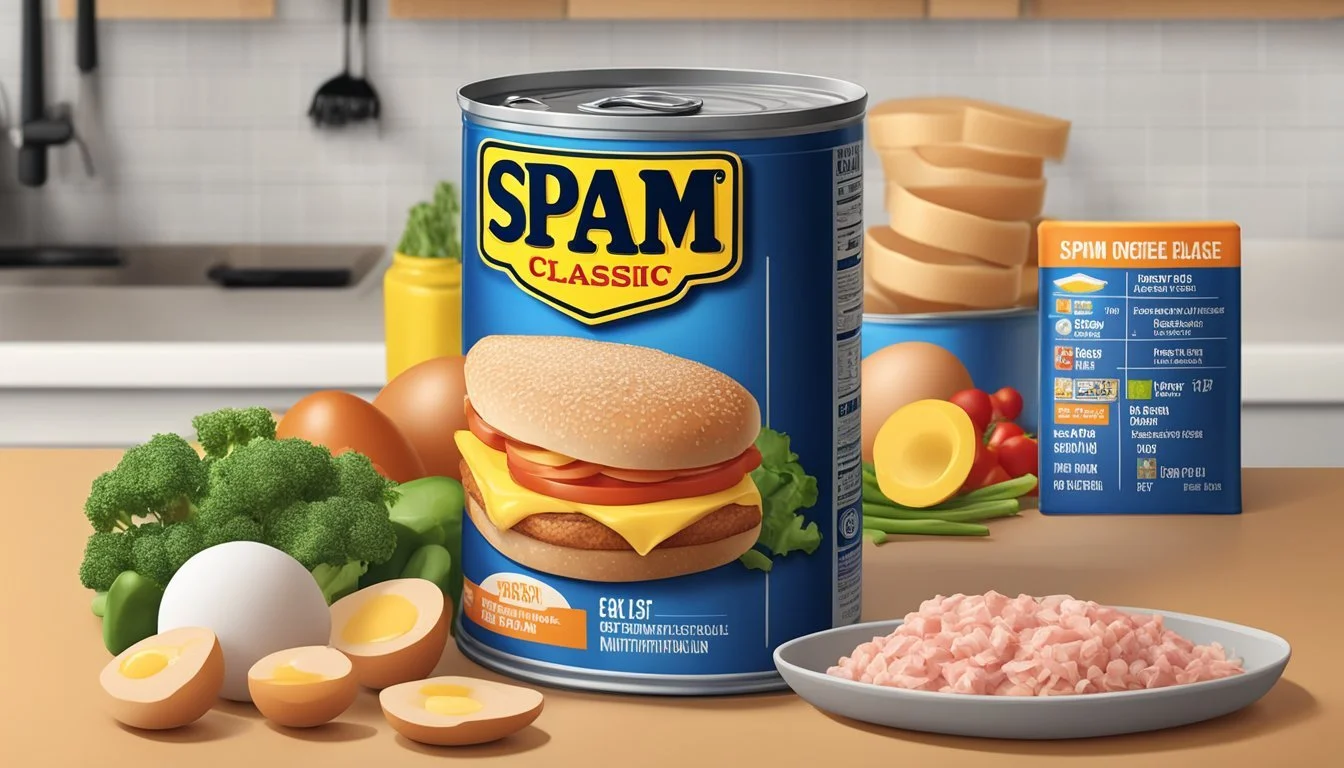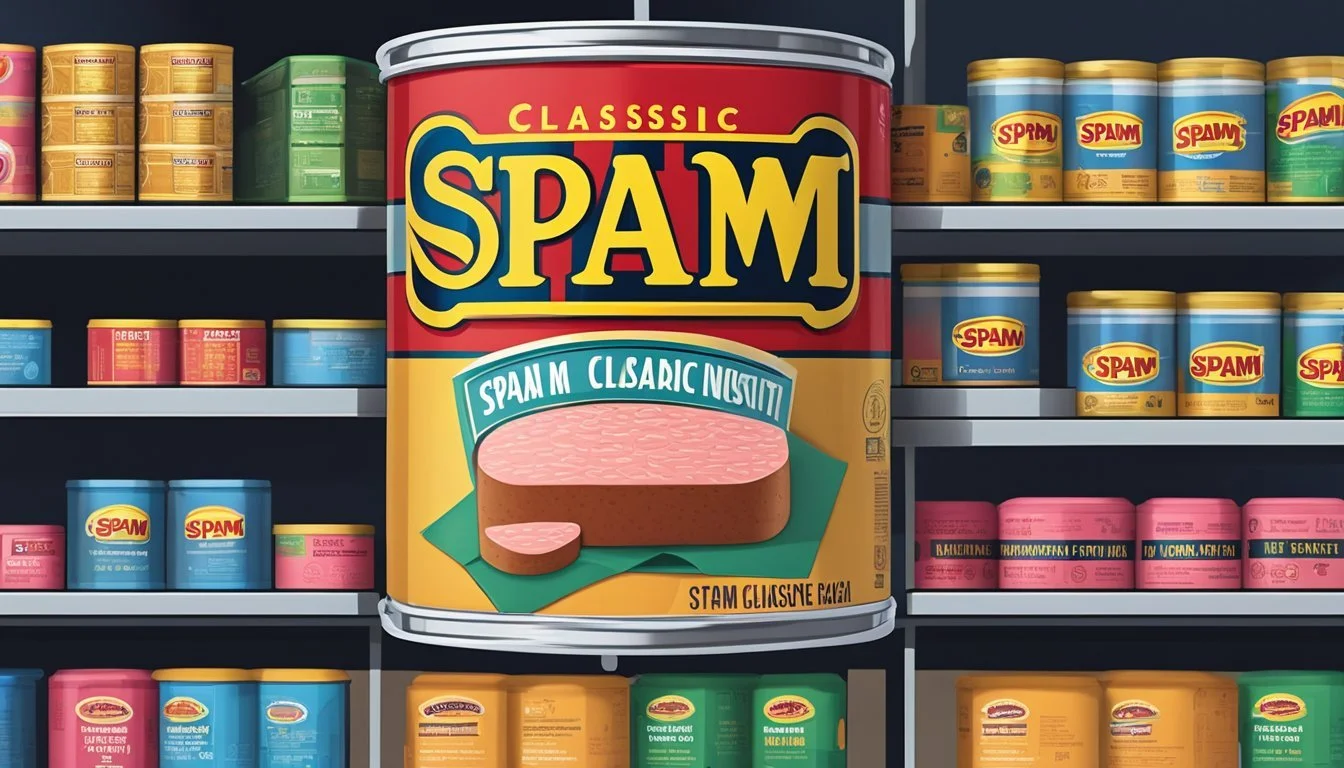Spam Classic Canned Meat: Time-Honored Convenience in a Can
Spam Classic has become a staple in pantries around the world since its introduction in 1937. Known for its versatility and unique taste, this spiced canned meat product is produced by Hormel Foods Corporation. Throughout the years, the Spam brand has expanded its range to include a variety of flavors, catering to different preferences and dietary needs, yet Spam Classic remains the original variety that continues to capture the hearts of many.
The iconic blue and yellow can of Spam Classic is recognizable to many and reflects a long-standing tradition of convenience and simplicity. This canned meat is fully cooked and ready to eat, whether hot or cold, which makes it a convenient option for a range of meals—breakfast, lunch, or dinner. With the ease of preparation and its shelf-stable nature, Spam Classic is a popular choice for quick family dinners, camping trips, and emergency food supplies.
Spam products are a significant part of American culinary culture, with billions of cans sold worldwide. The product has managed to become America's number one canned luncheon meat, largely due to its straightforward ingredients and the high protein content it offers in each serving. Its popularity is reflected not only in sales but also in the variety of ways it is served across different cuisines, demonstrating the brand's adaptability to global tastes and preferences.
History of Spam® Classic
Spam® has been a staple in American pantries since its introduction in 1937 by Hormel Foods Corporation. Originating in Austin, Minnesota, this canned meat product combines pork with ham. It was created as a way to make use of pork shoulder, which was not popular at the time.
During World War II, Spam® gained fame as a shelf-stable protein source that could be easily transported and consumed without refrigeration, making it invaluable to soldiers overseas. After the war, its popularity continued to surge as Hormel marketed it as a versatile and convenient choice for American households.
Innovation and Utility
Practicality: Spam® quickly became known for its long shelf life and ease of use. The simple open-can-and-eat approach, along with the option to cook or fry it, made it popular among military forces and time-constrained families alike.
Global Reach: Beyond the United States, Spam® Classic has been embraced in various cultures globally, often integrated into local cuisines.
Marketing Success: Innovative marketing campaigns have helped position Spam® as an iconic brand in the American foods industry. The product has been celebrated in festivals and has even been the subject of a Broadway musical, demonstrating its deep-rooted influence on culture.
Throughout its history, Spam® Classic has maintained its original recipe, which is a mixture of pork shoulder meat and ham. This blend, seasoned with a unique mix of spices, has remained consistent, cementing Spam®'s place as a familiar and nostalgic food product for countless consumers.
Ingredients Overview
Spam Classic, a well-known canned meat product, comprises a concise list of ingredients, with each serving a specific purpose in creating its distinctive taste and texture. This section delves into the primary ingredients, preservatives, and additives found in Spam Classic.
Primary Ingredients
Pork: The foremost ingredient, consisting of both pork shoulder and ham—a cut from the pig's hind leg.
Salt: Employed for flavor enhancement and as a preservative.
Water: Necessary for the processing and mixing of the meat and other components.
Preservatives
Sodium Nitrite: A common preservative used for its role in preventing the growth of bacteria and for maintaining the pink color of Spam.
Additives
Sugar: It imparts a subtle sweetness and contributes to the browning of Spam when cooked.
Potato Starch/Modified Potato Starch: These are included to improve texture, binding the meat together which also helps in reducing the product's overall moisture content.
Nutritional Information
Spam Classic is a canned cooked meat product primarily composed of pork, ham, salt, water, modified potato starch, sugar, and sodium nitrite. Here's a table summarizing the key nutritional components per serving size:
Nutrient Amount per Serving (56g) Calories 180 kcal Total Fat 16 g Saturated Fat — Trans Fat — Cholesterol — Sodium — Total Carbohydrates 1 g Dietary Fiber 0 g Sugars 1 g Protein 7 g Vitamins — Minerals —
The calories in Spam Classic are distributed as follows: approximately 82% from fat, 16% from protein, and 2% from carbohydrates. It lacks a significant presence of dietary fiber. The exact amounts of saturated fat, trans fat, cholesterol, sodium, vitamins, and minerals were not specified in the search results.
It's important to note that Spam is known for its high sodium content and significant fat, which contributes to its long shelf life and flavor. A single serving size, which is typically 56 grams or 2 ounces, provides a calorie-dense nutrition profile, and with most of the calories coming from fats, it is a rich source of energy. However, due to its high fat and sodium content, consumers are often advised to enjoy Spam in moderation within a balanced diet.
Culinary Uses
Spam Classic Canned Meat has transcended its humble beginnings to become a versatile ingredient in numerous recipes, with a distinctive flavor that adds depth to various dishes. It's gaining popularity in restaurants that embrace its unique meaty quality.
Recipes and Cooking
Spam lends itself to a wealth of culinary applications due to its precooked nature, making it a convenient meat inclusion in many recipes. A key attribute is its ability to be incorporated into a dish either as a main ingredient or as a complementary flavor enhancer. Here are specific ways to cook with Spam:
Fried: Diced or sliced, it crisps well for texture.
Baked: Works as a filling in peppers or pastries.
Stir-Fried: Adds a salty, savory component to dishes.
Traditional recipes often see it integrated into breakfasts, sandwiches, and rice dishes, as shown in these examples:
Spam and Eggs: A simple, protein-rich start to the day.
Spam Musubi: A Hawaiian favorite where it is combined with sushi (What wine goes well with sushi?) rice and wrapped in seaweed.
Spam Fried Rice: Elevates the staple with its robust flavor.
Spam® in Restaurants
Restaurants have increasingly incorporated Spam into their menus, showcasing its adaptability. It is found in:
Ethnic Cuisines: Featured in Asian and Pacific island dishes.
Fast Casual Dining: Used in burgers, burritos, and innovative appetizers.
Fine Dining: Reinvented in gourmet interpretations.
The meat's distinct flavor and texture can be a nostalgic nod or a contemporary twist, as chefs appreciate its unique qualities. Restaurants might serve it as a specialty item or integrate it into a signature dish, demonstrating its culinary breadth.
Cuisine Type Dish Example Use of Spam Asian Spam Fried Rice Main Protein Hawaiian Spam Musubi Central Element American Diner Spam and Egg Breakfast Plate Protein alongside eggs Fusion Cuisine Spam Tacos Fusion protein component
The meat's versatility ensures its continued presence in both home kitchens and restaurant menus.
Consumer Insights
This section focuses on what consumers are saying about Spam® Classic canned meat and where these products can be purchased. Insights are drawn from product reviews and availability in retail outlets.
Product Reviews
Consumer reviews indicate that Spam® Classic remains a popular choice for its convenience and versatility. Spam® Classic is often praised for its long shelf life and the ease of incorporating it into various recipes, from simple sandwiches to more elaborate dishes. Some reviewers note the nostalgic aspect of the product, associating it with comfort foods and quick meal solutions. However, like any product, it receives a range of opinions, with some consumers expressing preferences for lower-sodium options or different textures.
Where to Buy
Spam® can be found in a wide array of retail environments. Consumers can purchase Spam® Classic at:
Major Supermarkets: Such as H-E-B stores, which carry a range of Spam® products.
Online Retailers: For added convenience.
Specialty Stores: That might offer a variety of flavors not found in larger chains.
It is always advisable for consumers to check the product's lot code and expiration date when making a purchase, to ensure they are buying the freshest product available.
Cultural Impact
Spam's enduring popularity has led to unique cultural landmarks and a status as an American icon with global recognition. The presence of the Spam® brand museum and Spam's influence within various cultures exemplify its impact beyond just a food product.
Spam® Brand Museum
The Spam® Brand Museum in Austin, Minnesota, celebrates the history of Spam since its inception. The museum features interactive exhibits, a gift shop, and historical displays that detail Spam's journey from a wartime staple to a household name. Visitors to the museum can explore the brand's evolution, its advertising campaigns, and even taste different flavors of the product. The museum gift shop allows fans to take home a piece of Spam's unique culture, offering items ranging from branded merchandise to collectibles.
Spam® as a Cultural Icon
Through various means, Spam has cemented itself as a cultural icon within American society and beyond. Recognized for its role in wartime sustenance and its subsequent integration into different cuisines, Spam is synonymous with versatility and adaptability in food culture. Events like the Spamarama cooking festival and Broadway musicals such as "Spamalot" underscore the brand's playful engagement with pop culture. The product has become a symbol of ingenuity, with a place in everything from culinary competitions to artistic expressions that both celebrate and satirize its place in gastronomy.





